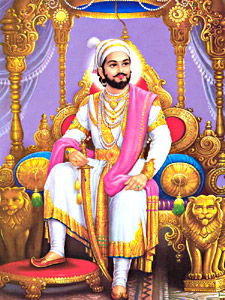 Foundation of British rule in India is closely associated with archetypal English life back in England in the late years of 16th century. As the Elizabethan era approached its curtain call, English life exuded a passionate sense of energy and optimism which drove men to the limits of the earth. The tempting of wealth in the spices of the East Indies or Orient, correlated soundly with English naval strengths. In London, the East India Company set the `national vision` of competition with the Portuguese, Dutch and French, while in India it modernised the ports of Madras, Bombay and Calcutta. As national interests began to collide in India, the growth of British power began to devastate other European nations and the stumbling and wavering power of the Mughal Empire. In this context, the rise of Robert Clive and his victory at the Battle of Plassey in 1757 foreshadowed British East India Company`s expansion of vision from economics to administrative control of India. This dramatic and striking metamorphosis became evident in the Company`s espousal of Diwani from the Mughal Emperor. From this time forth, the dominance of revenues of Bengal, Bihar and Orissa became the Company`s, as did the associated administrative and judicial responsibilities.
Foundation of British rule in India is closely associated with archetypal English life back in England in the late years of 16th century. As the Elizabethan era approached its curtain call, English life exuded a passionate sense of energy and optimism which drove men to the limits of the earth. The tempting of wealth in the spices of the East Indies or Orient, correlated soundly with English naval strengths. In London, the East India Company set the `national vision` of competition with the Portuguese, Dutch and French, while in India it modernised the ports of Madras, Bombay and Calcutta. As national interests began to collide in India, the growth of British power began to devastate other European nations and the stumbling and wavering power of the Mughal Empire. In this context, the rise of Robert Clive and his victory at the Battle of Plassey in 1757 foreshadowed British East India Company`s expansion of vision from economics to administrative control of India. This dramatic and striking metamorphosis became evident in the Company`s espousal of Diwani from the Mughal Emperor. From this time forth, the dominance of revenues of Bengal, Bihar and Orissa became the Company`s, as did the associated administrative and judicial responsibilities.
However, a secure foundation of British rule in India bore initial stamps during the rising years 17th century, when East India Company traders had obtained from Her Highness Queen Elizabeth a charter of exclusive rights to trade in the Eastern seas. Almost overshadowing and ousting the Mughal style of Persian trade and business in administration, English Company rule deviated in every form of `Indianised` ruling, grounding factories, fortresses, native townships and the like. In this manner, in 1612, East India Company established its first factory in Surat.  The gradual rise and further steep rise towards successful officialdom went on in a nearly subtle manner, completely unnoticed by common populace as well as native kings. A guaranteed foundation of British rule had turned into reality, with the additional establishment of a fortified factory in Madras in 1639. The caste system was however cleverly not touched at all, owing to its sensitiveness within native minds, with Hindus and Muslims working side-by-side in the factories as weavers. In the meantime, Englishmen from the Company made several to and fro voyages to England and back to India, basically to obtain funds and strengthen British solidification. This extreme shrewdness amongst the `whites`, was the sole dominating reason to look down upon the `natives` and rule for 200 prolonged years.
The gradual rise and further steep rise towards successful officialdom went on in a nearly subtle manner, completely unnoticed by common populace as well as native kings. A guaranteed foundation of British rule had turned into reality, with the additional establishment of a fortified factory in Madras in 1639. The caste system was however cleverly not touched at all, owing to its sensitiveness within native minds, with Hindus and Muslims working side-by-side in the factories as weavers. In the meantime, Englishmen from the Company made several to and fro voyages to England and back to India, basically to obtain funds and strengthen British solidification. This extreme shrewdness amongst the `whites`, was the sole dominating reason to look down upon the `natives` and rule for 200 prolonged years.
Amidst significant change of rule in the English seat, such as from Elizabeth I to James I, from James I to Charles I and from Charles I to William and Mary and finally to Queen Anne, Indian ruling under Company rule also stayed witness to both positive and negative changes in the long run. A striking factor that can be stated here is that during the founding periods in British rule in India, not all Indians were against them, indeed, the foreigners were welcomed as much as Indian citizens as were its daily dwellers. That ruthlessness and pain-infliction was to come much later, post the mid-1800s. Madras, Bombay and Calcutta (later to become Presidency towns) gained prime importance day after day, with northern India almost under the sway of British ruling. Battles with the Portuguese rulers were however an impending detriment to British solidification, with Anglo-Dutch naval forces attacking by the seas. This being overcome, foundation of British rule in India looked towards rather greener pastures, with judicial buildings and laws being implemented each new day. Industries like tea and cotton started to see the light of day, including British rulers taking steps towards south India, under a treaty with Maratha dare-devil emperor Shivaji.
 In the context of British East India Company, officers and lawmakers were for the most part running at incredible financial losses, making the old and new East India Companies being amalgamate with further fresh rules. This gradual slow and steady ascension of the Company had witnessed some insignificant hindrances, after which Robert Clive`s entrance in the Indian scene changed almost everything that Indians knew as well-established. Clive`s influence during the early years of 18th century and his subsequent rise with political supremacy to foundation of British rule in India had outmatched every initial British Viceroy or Governor-General. On behalf of the Company Clive had won a couple of wars, culminating in the Battle of Plassey in 1757. The last independent Nawab of Bengal, Siraj-ud-Daula, had much to do in the context of commencement of East India Company rule and his relentless fight to native supremacy, ending in his army general, Mir Jafar`s exceeding disloyalty. Bengal, during this time had assumed superlative significance, with Mir Jafar and Mirqasim contributing much in aid of English rule with the Battle of Buxar. Foundation of British rule in India, hence, received additional impetus and thrust with Warren Hastings, first Governor-General of Bengal subsequently coming to limelight, however with disastrous circumstances.
In the context of British East India Company, officers and lawmakers were for the most part running at incredible financial losses, making the old and new East India Companies being amalgamate with further fresh rules. This gradual slow and steady ascension of the Company had witnessed some insignificant hindrances, after which Robert Clive`s entrance in the Indian scene changed almost everything that Indians knew as well-established. Clive`s influence during the early years of 18th century and his subsequent rise with political supremacy to foundation of British rule in India had outmatched every initial British Viceroy or Governor-General. On behalf of the Company Clive had won a couple of wars, culminating in the Battle of Plassey in 1757. The last independent Nawab of Bengal, Siraj-ud-Daula, had much to do in the context of commencement of East India Company rule and his relentless fight to native supremacy, ending in his army general, Mir Jafar`s exceeding disloyalty. Bengal, during this time had assumed superlative significance, with Mir Jafar and Mirqasim contributing much in aid of English rule with the Battle of Buxar. Foundation of British rule in India, hence, received additional impetus and thrust with Warren Hastings, first Governor-General of Bengal subsequently coming to limelight, however with disastrous circumstances.
The advent of 19th century began with a new day as India further witnessed Lord Dalhousie ascending Company throne, largely aiding in foundations of later administration and by his sound policy enabling his successors to stem the tide of surging rebellion. Foundation of British rule in India under Dalhousie stayed spectators to resounding battles, all of which were crushed by the General himself. Umpteen ups and downs, political and administrational slips made the East India Company to bow down under native pressure in 1857 with the path breaking Sepoy Mutiny in 1857. By that time period, Indian citizens had united under one common banner, to fight back the nepotist and misleading English rule. Men like Mangal Pandey, Rani of Jhansi, Nana Saheb and Baji Rao II occupied first-rate admiration amongst native population shouting anti-English slogans. Fire, toil, blood and loss of life began to be slowly witnessed, as Her Highness Queen Victoria annexed India under her direct rule from Great Britain during matured years in 1800s.
In spite of her rosy promises and solemn aid to surprised and helpless natives, India as a country gradually degenerated into hopelessness, with another significant change in British Empire. Foundation of British rule in India had, by the late 19th century secured its position by employing sadistic hurting upon revolutionists and freedom fighters, who they termed as `terrorists`. This continuous reckless chain of merciless ruling, accompanied by everyday fresh change of law into harsher ones, made the whole India come up against British oppression at large, making that solidified foundation of British rule shake till last breath in India, making Indian Independence a reality in 1947.






































